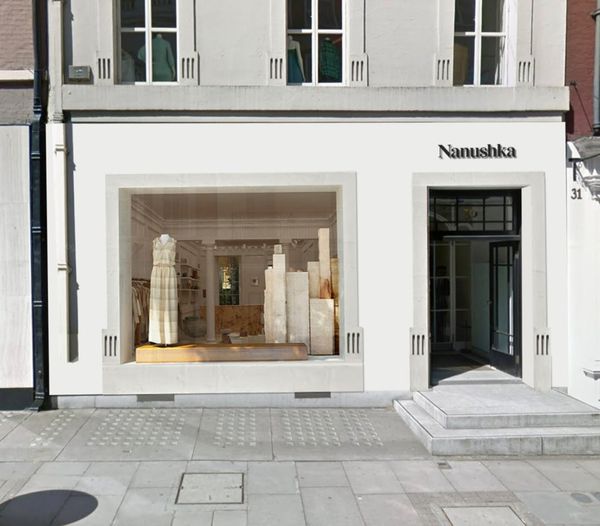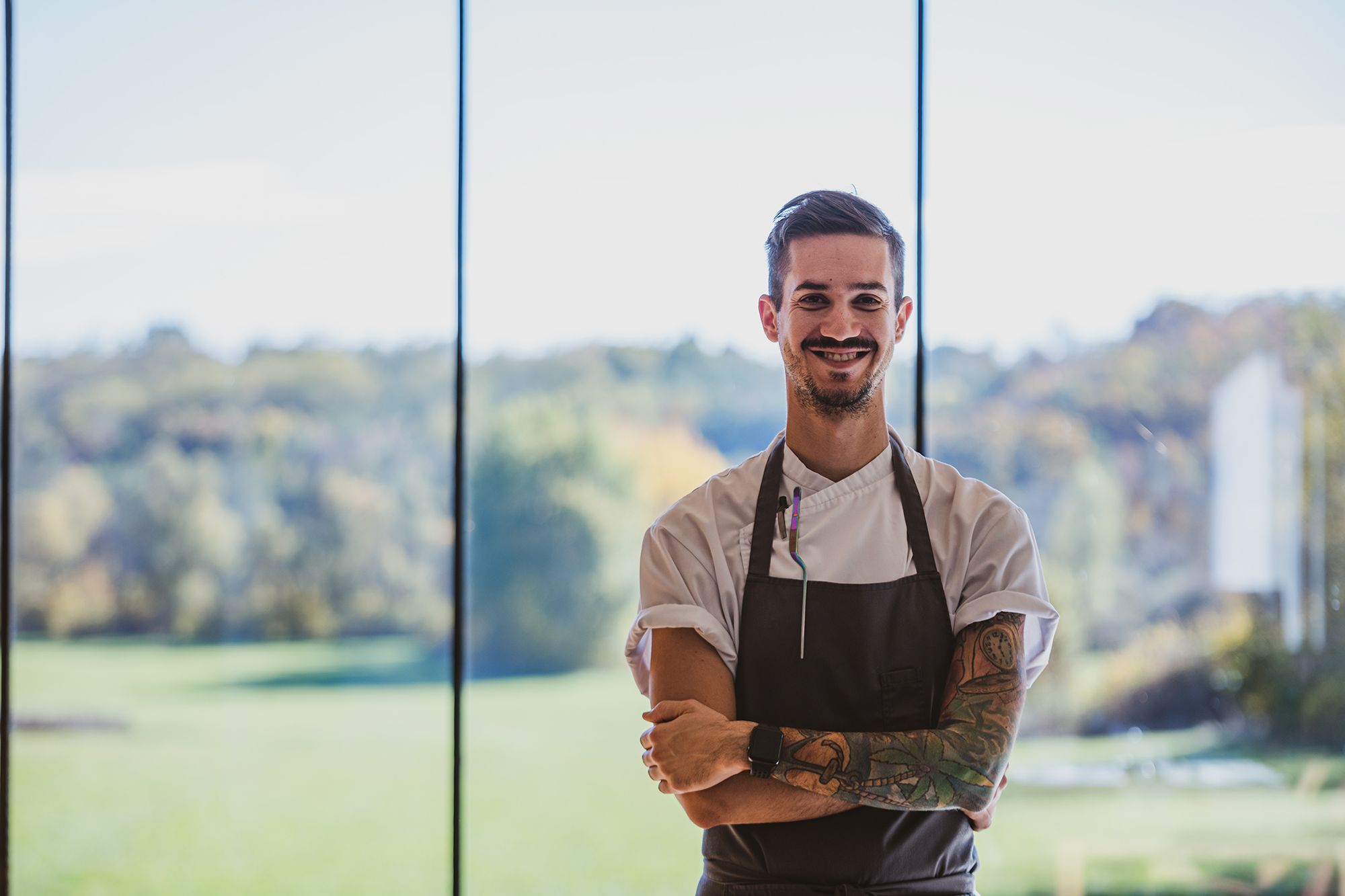In the seventh episode of our series, we present the fixed star of Őriszentpéter, where they cook from what nature gives, may it be thorn or baby cones. The Michelin star chef who left the buzz of the capital for Tata to create something lasting right next to the Eszterházy Castle represents a very similar attitude. The food blogger of the country also promotes the importance of small producers and local ingredients, who also tells us that it is indeed possible to eat less meat even for “those with a big, Hungarian stomach”. Less meat, more vegetables, naturally. The joint campaign of Piqniq Budapest and Mastercard.
Ferenc Kvasznicza – owner, Pajta
“The goal is to give something that makes it worthy to come here and mandatory to return.”
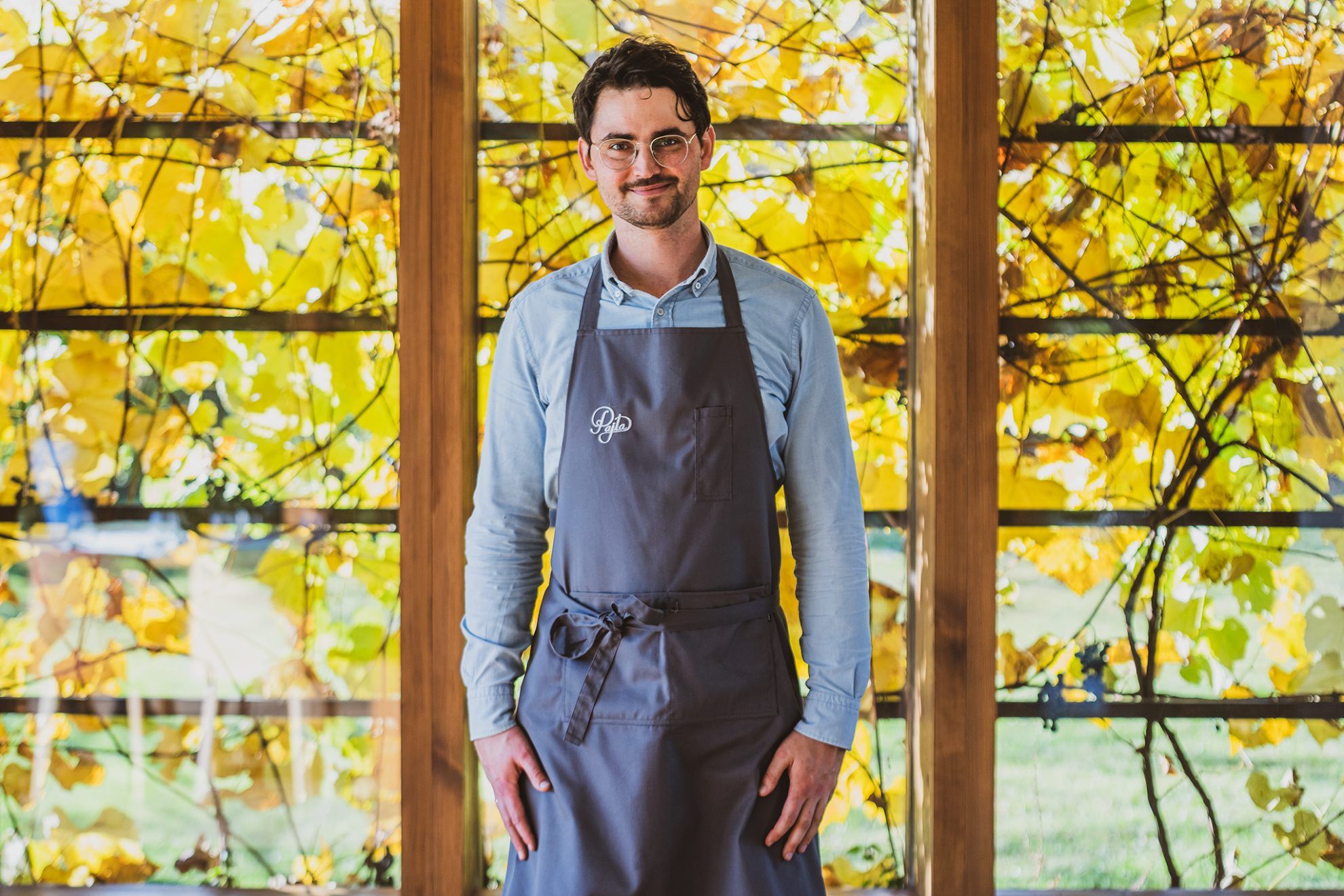
The former summer house in the barn of which Ferenc and Flóra Kvasznicza created Pajta, their restaurant in Őriszentpéter, belonged to their family. For the owners it was obvious that instead of an urban restaurant they would opt for hospitality in the countryside, despite the fact that the Őrség region was not a popular tourist destination until recently. Over the years, Pajta worked very hard to get its name out there. It started as a café, which got a kitchen, then it was expanded into a restaurant –the team was moving forward steadily. Richárd Farkas joined them three years ago, and redefined Pajta’s path and culinary concept as a chef.
Richárd Farkas – chef, Pajta
Richárd has first been to Pajta as a guest but after a quick talk with the owner it was decided that he would be asked to lead the restaurant. The chef arrived to the Őrség after a detour to Barcelona, with exciting professional experiences and with plenty of plans about the kitchen Pajta represents today. The goal of the restaurant is to offer a complex experience in which in addition to the dishes, the local ingredients, wines and the land surrounding the people also play an important role.
“What used to be evident to our great grandparents we need to solve all again.”
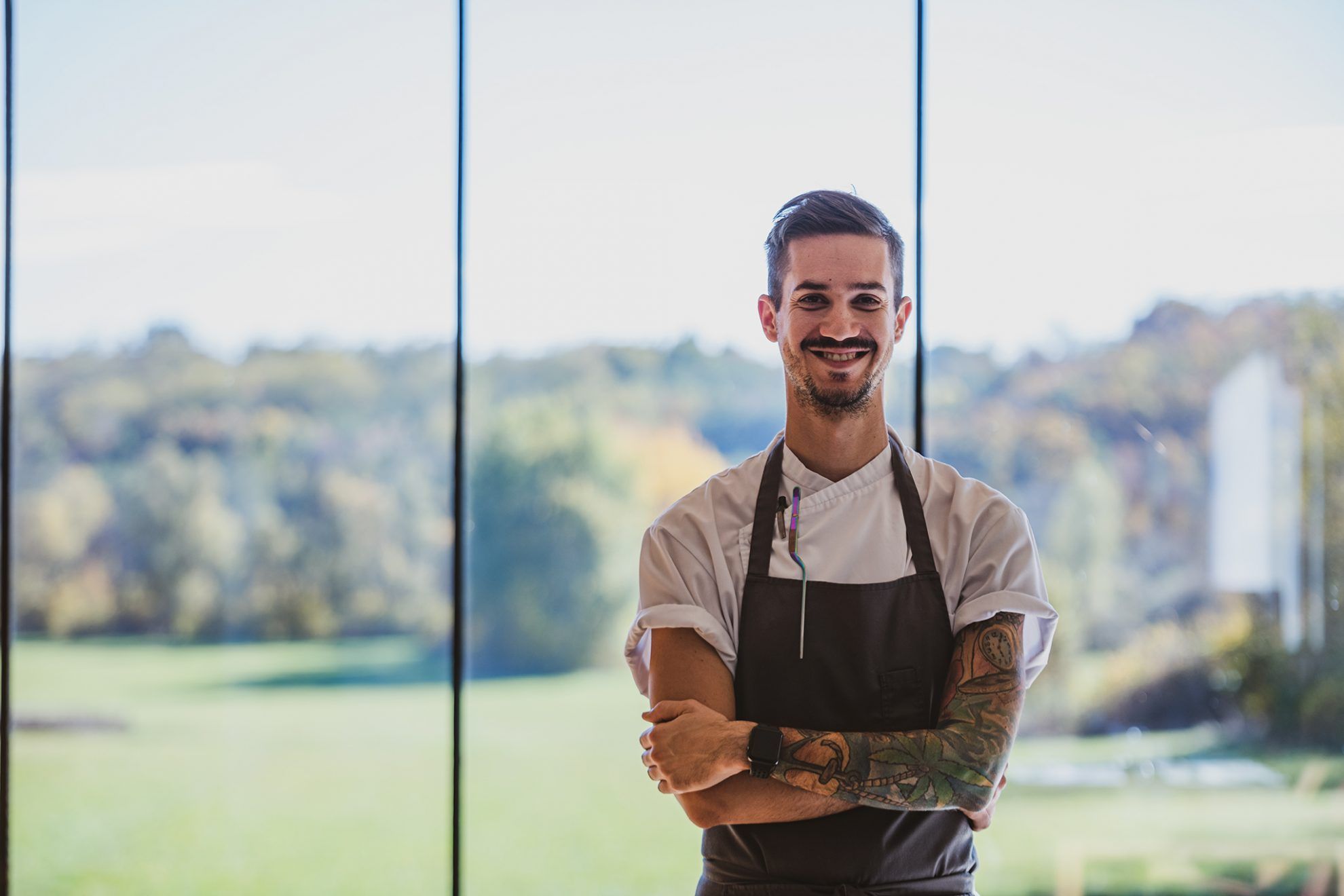
The philosophy of Nordic cuisine, the use and preservation of ingredients in our direct environment has always been close to Richárd. This also has traditions here, in Hungary, with the difference that our great grandmothers didn’t refer to this as Nordic. The team collects a lot of produce in spring with the help of a botanist, including fruits, herbs and flowers from the garden and the forests and fields nearby which they use during the year.
István Pesti – chef, Platán
István Pesti moved to the countryside deliberately after winning the Michelin star with Tanti in 2015. Platán‘s own vegetable garden was especially appealing to the chef. The full renovation of the restaurant was completed this year, in the course of which they also reinvented the gastronomy of the restaurant and the related design concept based on the ideas of designer Zoltán Varró and István Pesti. István’s basic assertion is that the countryside is an important and yet unexploited area of Hungarian gastronomy, and with his work he wishes to change that.
“Here you have to think completely differently than in Budapest. There I first come up with a dish and the I come up with the ingredients. Here it works in the opposite way: we are driven by the ingredient.”
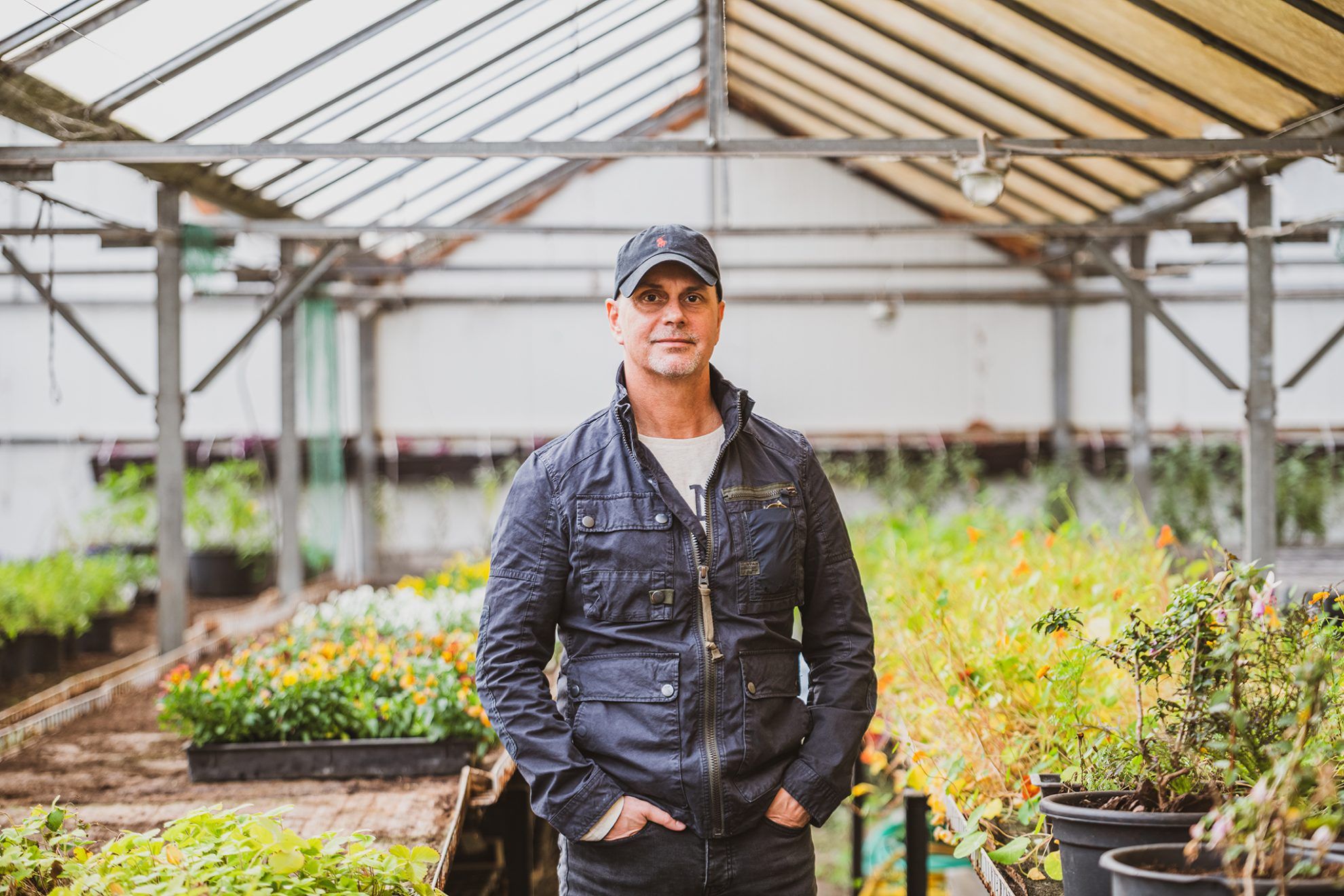
The two basic ingredients of István’s kitchen in Platán are the local and the seasonal, and he can express this approach perfectly with the bistro genre. The chef feels that it is his task to show with his team that new and exciting flavor combinations can be made of ordinary ingredients, too, without compromises in quality.
Zsófi Mautner – cookbook editor, food blogger, Chili & Vanília
As a food blogger, Zsófi forms a bridge between producers and conscious shoppers. She considers this the first step to being able to think about ingredients along new factors. She brings the farmers, who live their lives in a manner that urban people often perceive as strange, closer to readers and showcases quality, real food products.
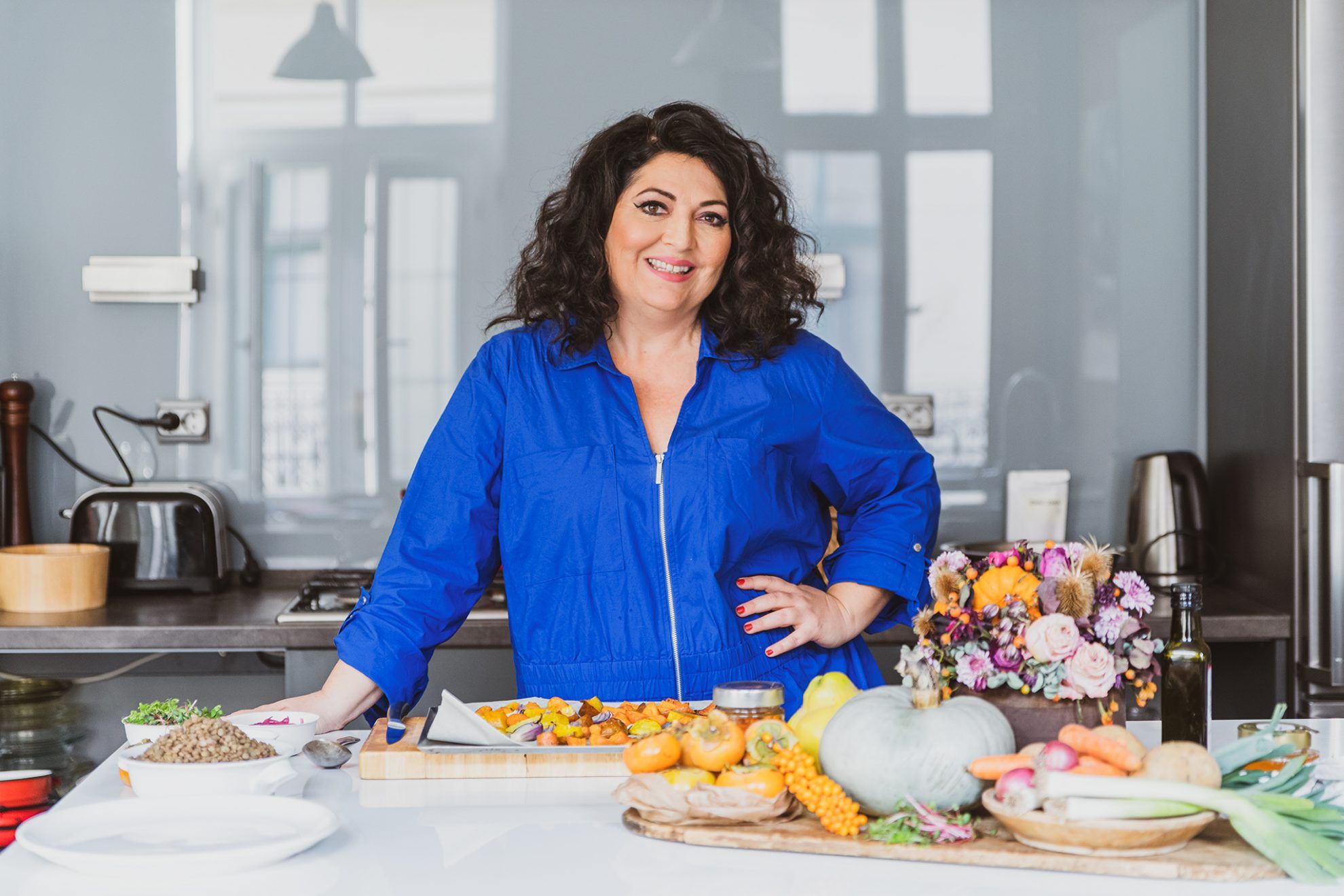
The followers of her social media pages can see how much emphasis Zsófi places on farmers and their products. She goes from village to village to find the perfect honey, bio poppyseed or red pepper, and stands next to the producers for hours so that she can show how a given product is made. In the course of her work, she gets to learn about the phases of work and the people whom we can thank for the ingredients, and then conveys the knowledge thus acquired. She changes our approach to ingredients while building trust, and give a face and story to what we use in the kitchen.
Gergely Gulyás – producer, Szorgos Gazda
One of Zsófi’s favorite producers is Szorgos Gazda in Nagykáta. The family farm is managed by Gergely and Melinda Gulyás, who has been working on providing customers with chemical-free seasonal vegetable for six years now. It was important to them to allow people get their produce from sources they know and to build the trust that prevailed in the relationship between producer and customer back in the old days. They know 80% of the customers and greet them as old friends at farmer’s markets in Budapest and its vicinity where we can meet them in person.
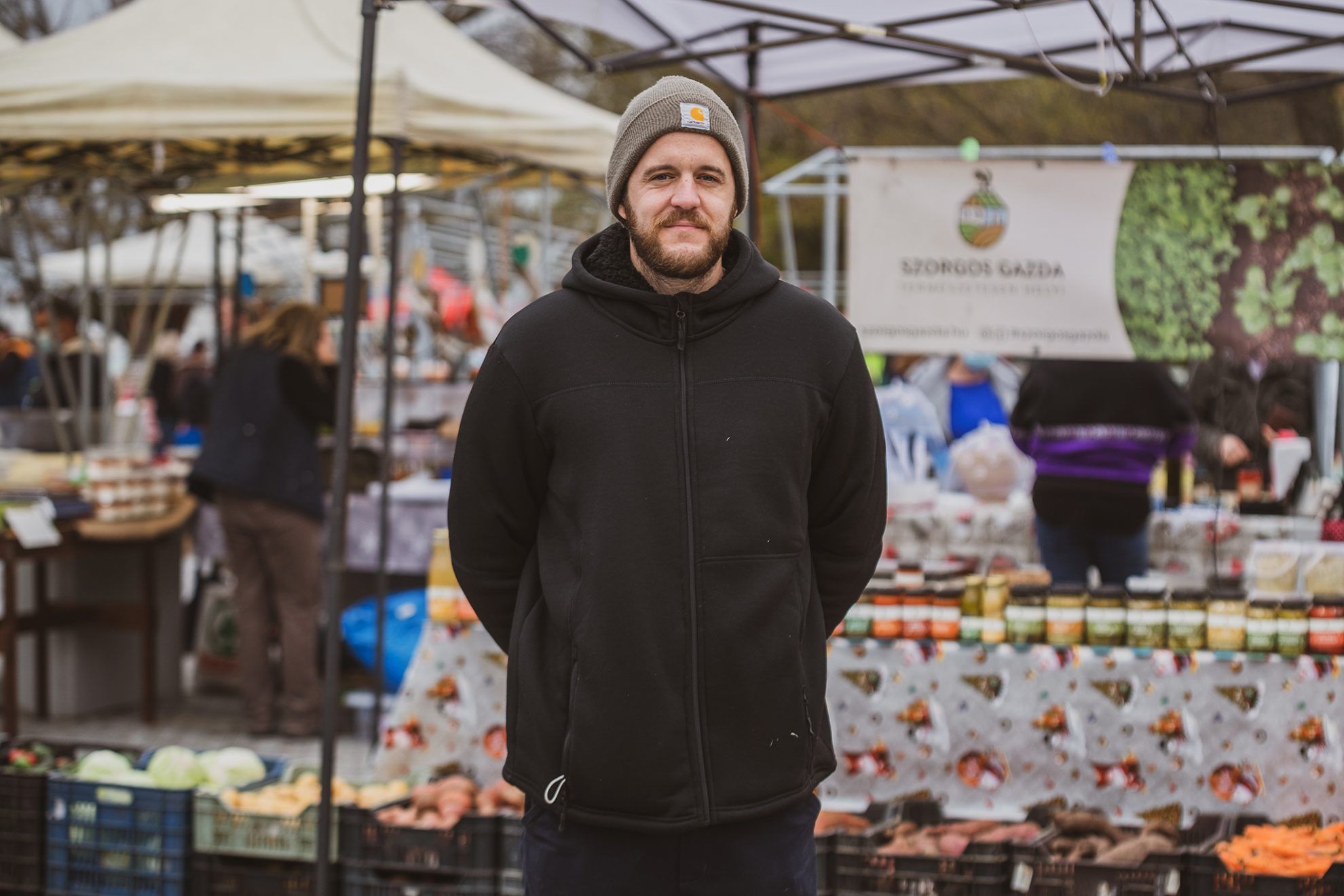
Gergely and Melinda are cultivating a small, one hectare land, but they say this is the size they can fully utilize and care to with maximum attention. When it comes to development, their goal is not to increase their land, but to develop their machinery to make production even more effective so that they can bring larger quantities to the markets. According to them, the love of vegetables, and, thus, eating less meat starts at learning that vegetables are delicious in our childhood. And for that we need quality products just like the ones they grow.
Photography | Dávid Horpáczi
Video | Gergő Sepsi
Piqniq Budapest | Web | Facebook | Instagram

HIGHLIGHTS | 5 o’clock tea
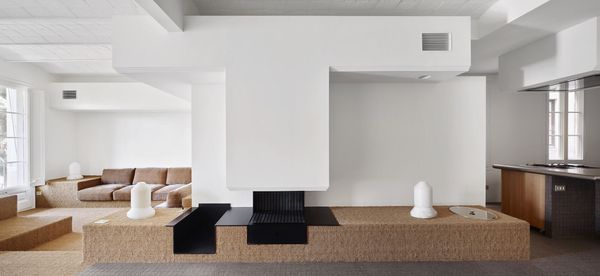
Favorite interiors of the week_38
